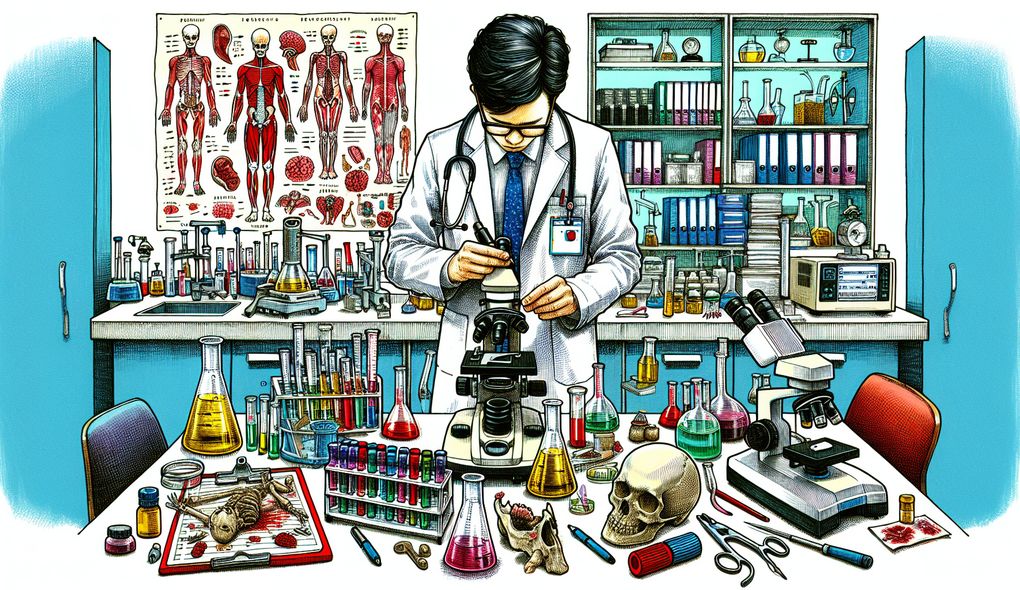How do you communicate autopsy findings to law enforcement and other non-medical professionals?
SENIOR LEVEL

Sample answer to the question:
When communicating autopsy findings to law enforcement and other non-medical professionals, it is important to use clear and concise language. I would start by providing a brief summary of the findings, including the cause and manner of death. Then, I would explain the evidence and analysis that led to these conclusions. I would avoid using medical jargon and instead use layman's terms to ensure understanding. Visual aids such as diagrams or photos can also be helpful in presenting complex information. Finally, I would be open to answering any questions and providing additional clarification as needed.
Here is a more solid answer:
When communicating autopsy findings to law enforcement and other non-medical professionals, it is crucial to prioritize clear and effective communication. I would start by preparing a comprehensive report that includes a concise summary of the findings, including the cause and manner of death. I would then provide a step-by-step explanation of the evidence and analysis that led to these conclusions, using layman’s terms to ensure understanding. In addition to the written report, I would also offer to present the findings in person to the investigative team, using visual aids such as diagrams or photos to enhance comprehension. Throughout the communication process, I would actively listen to the questions and concerns of the non-medical professionals, addressing them with patience and clarity. It is important to remember that not everyone has a medical background, so I would avoid using technical jargon and provide clear explanations. I would also be open to additional meetings or discussions to provide further clarification if needed. Lastly, I would emphasize the importance of maintaining meticulous records of findings and procedures, as well as staying up-to-date with advancements in forensic pathology, to ensure that the information provided is accurate and relevant.
Why is this a more solid answer?
The solid answer expands on the basic answer by providing specific details on how to effectively communicate with non-medical professionals. It highlights the importance of preparing a comprehensive report and offering to present the findings in person using visual aids. It also emphasizes the need for active listening, clear explanations, and maintaining accurate records. However, the answer could still be improved by providing examples of how the candidate has successfully communicated autopsy findings to non-medical professionals in the past.
An example of a exceptional answer:
When communicating autopsy findings to law enforcement and other non-medical professionals, I believe in taking a collaborative and empathetic approach. I would start by building a rapport with the investigative team, establishing trust and creating an environment where they feel comfortable asking questions and seeking clarification. In the written report, I would provide a clear and concise summary of the findings, along with a detailed explanation of the evidence and analysis that led to these conclusions. To ensure understanding, I would personalize the communication by using real-life examples or case studies that relate to the specific situation. During in-person presentations, I would engage the audience by actively involving them in the discussion and asking for their input. I would also be proactive in addressing any potential misconceptions or concerns that may arise. In addition, I would offer to provide educational sessions or workshops to non-medical professionals, helping them develop a deeper understanding of forensic pathology. By fostering open communication and education, I believe we can work together more effectively in the pursuit of justice.
Why is this an exceptional answer?
The exceptional answer goes above and beyond by emphasizing the importance of building rapport, personalizing communication, and offering educational sessions or workshops. It highlights the candidate's ability to create an inclusive and collaborative environment for communication. Additionally, it demonstrates the candidate's commitment to continuous learning and improvement by offering educational opportunities to non-medical professionals. This answer also showcases the candidate's passion for their work and their understanding of the broader impact of clear and effective communication in the pursuit of justice.
How to prepare for this question:
- Familiarize yourself with common non-medical terms related to forensic pathology to ensure effective communication.
- Practice explaining complex medical concepts in layman's terms.
- Review and analyze real-life case studies to prepare for questions and discussions.
- Stay up-to-date with advancements in forensic pathology by reading relevant research articles and attending conferences or seminars.
- Develop your active listening skills by practicing empathetic communication.
What are interviewers evaluating with this question?
- Attention to detail
- Verbal communication
- Written communication
- Ability to work with non-medical professionals

